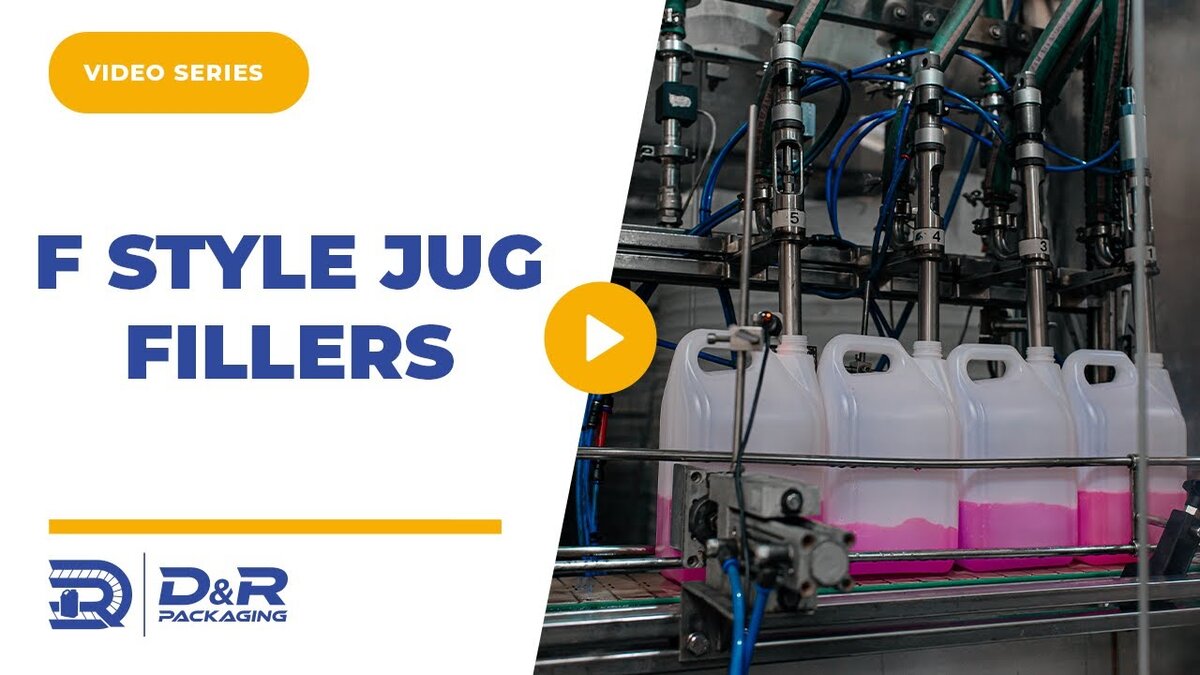In liquid packaging, efficiency drives success. Every second saved in the filling process boosts output, lowers costs, and keeps operations running smoothly. For many manufacturers, small inefficiencies in the fill cycle or bottle indexing process can have a significant impact on overall productivity. The solution lies in implementing targeted strategies to optimize your inline filler in order to achieve faster, more accurate results without sacrificing quality.
Understanding the Fill Cycle
The fill cycle is the heart of your inline filler’s operation. It refers to how fast liquid is pumped into the bottles. However, filling too fast can lead to inaccuracies, especially when working with net weight fillers. The challenge lies in balancing speed with accuracy to maintain optimal throughput.
Two-Stage Filling Process for Greater Efficiency
Our inline fillers use a two-stage filling process to maximize efficiency. Here’s how it works:
- Fast Pumping at High Volume: During the initial stage of the fill cycle, liquid is pumped into the bottle at high speed up to a pre-programmed set point. This allows us to fill a large portion of the bottle quickly.
- Trickle Filling for Precision: Once the liquid reaches a certain point, the machine slows down to a “trickle fill” mode. This ensures that the remaining liquid is added with precision, maintaining scale resolution and filling accuracy.
The combination of high-speed filling and precise trickle filling ensures that we can fill bottles faster without sacrificing accuracy. This method is especially useful for larger containers, where the speed of filling has traditionally been a bottleneck in production.
Enhancing the Bottle Indexing Cycle
While the fill cycle focuses on how fast liquid enters the bottle, the bottle indexing cycle deals with how quickly bottles are moved in and out of the fill stations. For maximum efficiency, both cycles need to work seamlessly together.
Programmable Bottle Gating System
To optimize your inline filler, it’s essential to have a fast, accurate bottle indexing system. Our machines use a programmable product gating system that is pneumatically actuated. Here’s how it works:
- Fast Conveyor Operation: The conveyor moves bottles quickly into position. However, speed alone isn’t enough.
- Precise Bottle Isolation: Each bottle must be accurately spaced and isolated in the filling station to ensure the scale can maintain accuracy.
- Programmed Bottle Release: Bottles are released at set intervals, allowing the system to handle them at the optimal speed for your specific product.
This system allows us to run conveyors at high speed while still ensuring each bottle is precisely positioned for filling. The gating and isolation systems are fully programmable and can be adjusted to fit different products, reducing setup times during changeovers.
Recipe-Based Controls for Faster Changeovers
Another key to optimizing your inline filler is the ability to quickly change between products without excessive downtime. Our inline fillers come with recipe-based controls, which allow you to save and recall optimized settings for different products. These controls let you:
- Store Parameters for Different Products: Each product may require a different fill speed, volume, and indexing time. With recipe-based controls, you can store these settings and recall them with a few simple steps.
- Reduce Setup Time: Instead of manually adjusting your machine for each new product, simply load the saved recipe and the machine will adjust itself accordingly.
This feature not only saves time during changeovers but also ensures consistent filling performance across different product lines.
Maximizing Throughput with Net Weight Fillers
Net weight fillers are known for their accuracy, but they are often slower compared to other types of filling machines. However, through careful optimization of both the fill cycle and bottle indexing cycle, we can achieve surprisingly high throughput. For example, on a two-head filler, we can fill up to 14 jugs of 2.5 gallons per minute—remarkably fast for this type of system.
Key Techniques to Maximize Throughput:
- Fast Fill Speeds with Trickle Finishing: Use high-speed pumps to get most of the liquid into the bottle quickly, then finish with precision to maintain accuracy.
- Optimized Bottle Indexing: Ensure bottles are spaced and moved efficiently through the filling stations.
- Recipe-Based Controls: Reduce downtime between product changes by saving and loading settings optimized for each product.
These techniques ensure you get the most out of your net weight fillers without compromising on accuracy or product quality.
In Summary
To optimize your inline filler for maximum efficiency, you need to focus on both the fill cycle and the bottle indexing cycle. Using a two-stage filling process allows you to balance speed with accuracy, while programmable bottle gating ensures bottles are handled efficiently. Recipe-based controls further reduce downtime during product changeovers, keeping your production line running smoothly. By paying attention to these details, you can significantly increase your throughput and overall efficiency.
Contact us today to learn more about how we can help you maximize your inline filler’s performance and streamline your production process.



